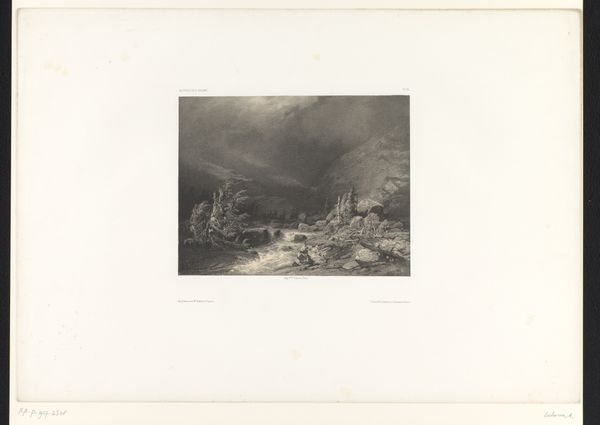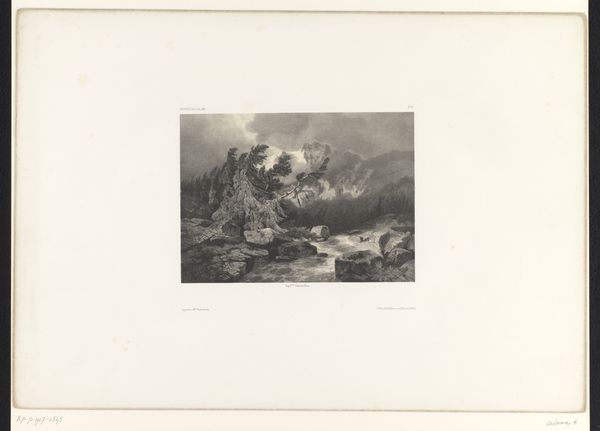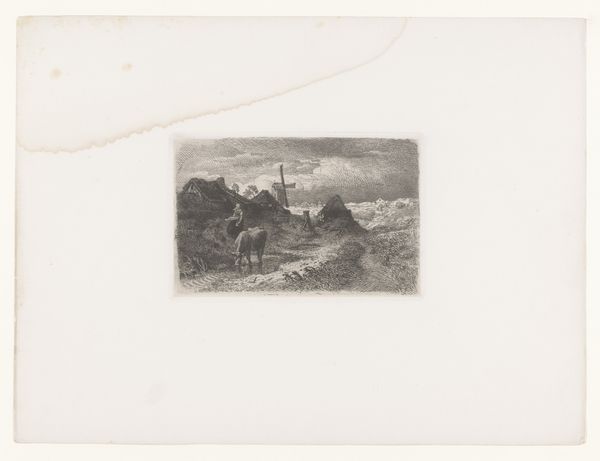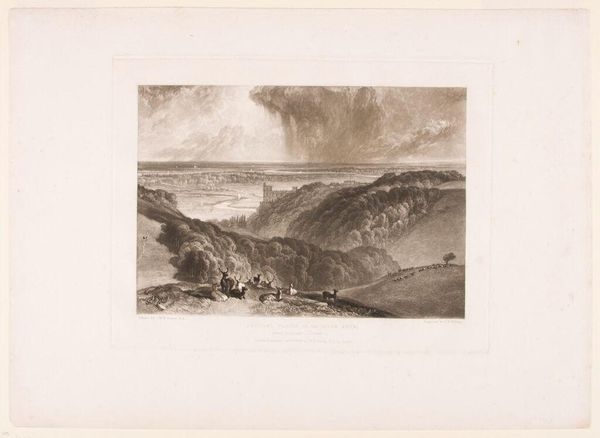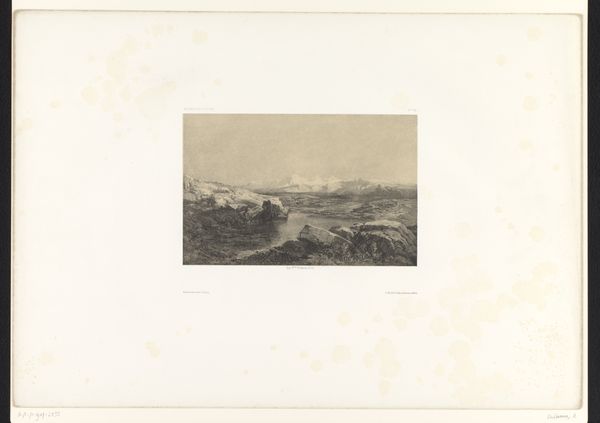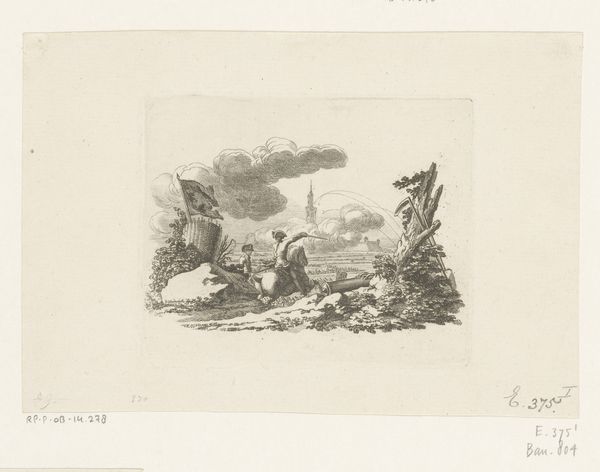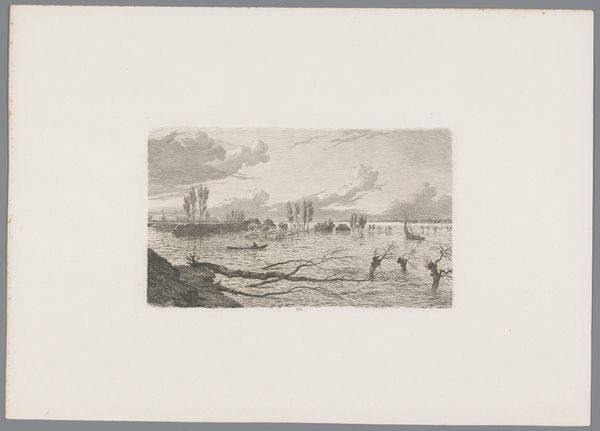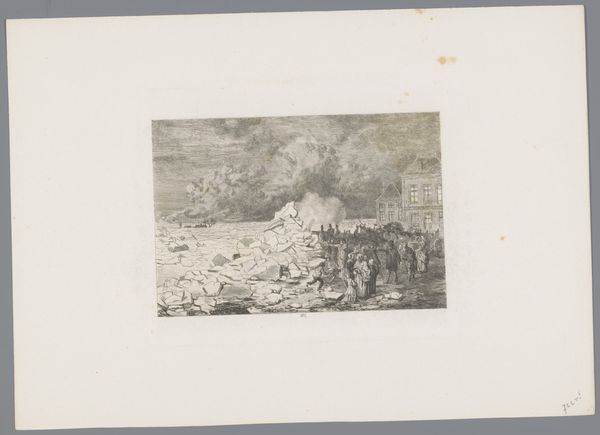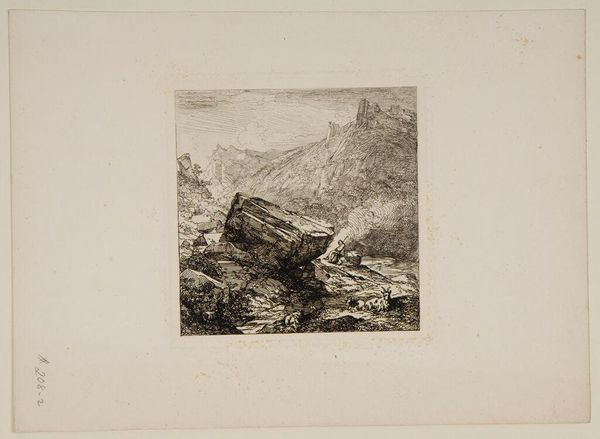
Dimensions: height 143 mm, width 232 mm
Copyright: Rijks Museum: Open Domain
Christian Wilhelm Ernst Dietrich created this landscape with drinking oxen in the mid-18th century using etching techniques. It’s interesting how landscape art gained prominence during this period, reflecting a changing relationship between people and their environment. In this image, Dietrich combines the reality of rural life with an idealised vision of nature, the etching gives us a glimpse into the economic activities and social structures of the time, but filtered through the aesthetic preferences of the era. Germany, where Dietrich worked, was experiencing a period of economic transformation, with agriculture still central to society, the image reflects a cultural interest in rural life. The image invites questions about the politics of representation, particularly the way it portrays rural labor, and the relationship between art and social reality. To understand the work more fully, we can look into the art market and patronage systems of the time, and the social and economic conditions that shaped artistic production. The meaning of art is contingent on social and institutional context.
Comments
No comments
Be the first to comment and join the conversation on the ultimate creative platform.
